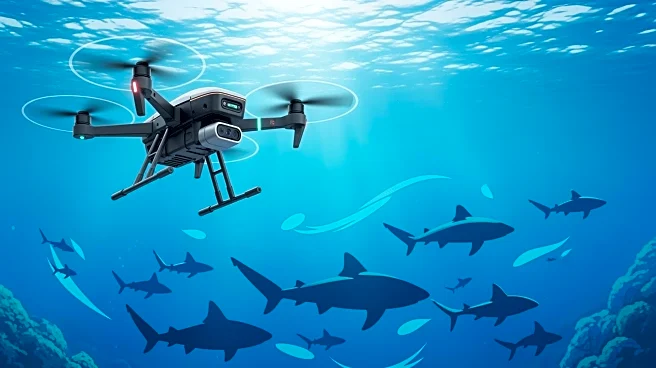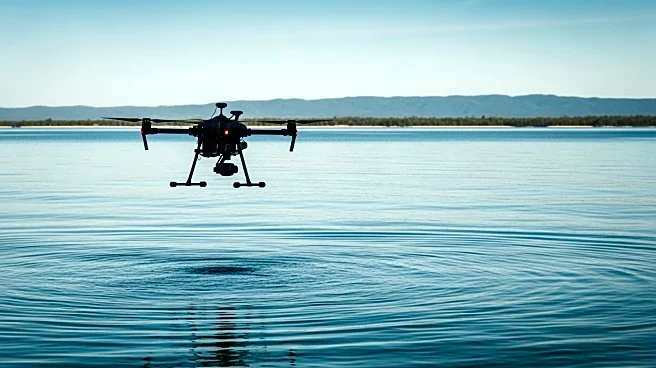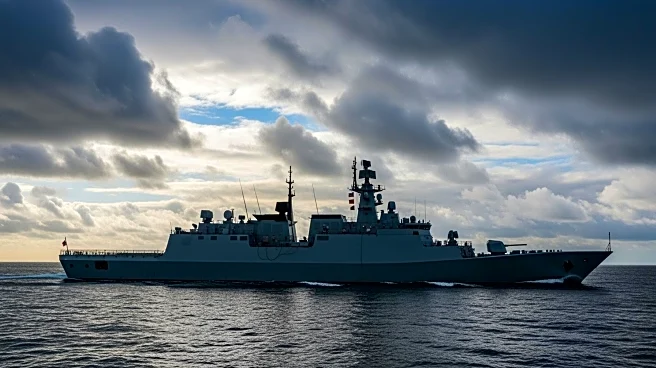What's Happening?
A recent study has utilized unmanned aerial vehicles (UAVs) to monitor juvenile sicklefin lemon sharks (Negaprion acutidens) in the remote marine nurseries of Dongsha Island. This dual-UAV strategy enabled
high-resolution, seasonal monitoring of the sharks, revealing consistent seasonal use of the island's shallow habitats by juvenile sharks. The study found no significant difference in total abundance between summer and winter, although a shift in size-frequency toward larger individuals in winter suggests cohort growth. The research highlights the importance of Dongsha Island as a nursery area, with environmental factors such as monsoonal exposure influencing shark distribution. The UAVs provided insights into spatial and temporal patterns, showing that certain areas serve as seasonal refuges during climatic stress, while others maintain high abundance year-round due to favorable conditions.
Why It's Important?
The use of UAVs in monitoring juvenile sharks is significant for conservation efforts, as it provides a non-invasive method to gather data on shark populations and their habitats. This approach allows for the identification of critical nursery areas that require protection, especially during peak parturition and recruitment periods. The findings underscore the need for habitat-specific conservation planning, as environmental heterogeneity plays a crucial role in shaping shark space use. By understanding these patterns, conservationists can implement strategies to minimize human disturbance and ensure the sustainability of shark populations. The study also highlights the potential impact of climate-driven changes on shark spatial ecology, emphasizing the need for adaptive management and regional conservation strategies.
What's Next?
Future steps include implementing seasonal zoning to protect critical nursery areas, continuous monitoring of environmental variability, and investigating post-nursery dispersal and regional connectivity through telemetry and genetic studies. Integrating UAVs with other monitoring methods, such as acoustic telemetry and diver-based observations, will enhance long-term ecological assessments. As climate change alters hydrodynamics and habitat structures, adaptive management incorporating real-time monitoring and environmental forecasting will be essential. Regional strategies should also consider gene flow and dispersal corridors to ensure population resilience across the South China Sea.
Beyond the Headlines
The study reveals deeper implications for marine conservation, highlighting the role of UAVs in providing scalable and repeatable monitoring solutions for remote ecosystems. The integration of UAVs with complementary methods can offer a comprehensive understanding of shark ecology, improving conservation outcomes. The research also points to the potential influence of anthropogenic factors on shark distribution, suggesting that human disturbance may alter spatial or demographic structures. These insights are crucial for developing effective conservation policies that balance ecological integrity with human activities.












